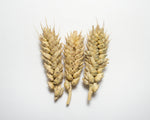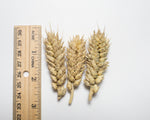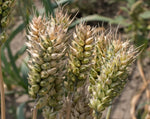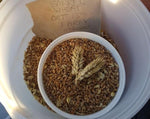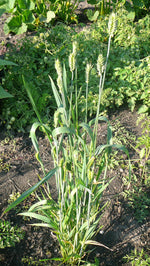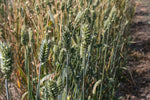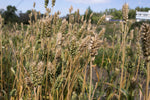Orders mailed out as time allows. Thanks for your understanding and patience. Inventory to be updated with 2025 harvest in December sometime. NOTE FOR US CUSTOMERS: Unfortunately we are no longer sending seeds to the USA at this time.
Orders mailed out as time allows. Thanks for your understanding and patience. Inventory to be updated with 2025 harvest in December sometime. NOTE FOR US CUSTOMERS: Unfortunately we are no longer sending seeds to the USA at this time.
A retired farmer from Humboldt gave Jim a sample that he called Barrel Wheat or Red Club Wheat. It has short plump beardless heads producing red kernels, a bit smaller than modern wheats, which are semi-hard and low protein. According to the literature it comes from a cross between a club wheat and a bread wheat in 1899 at Washington Agricultural Experimental Station. It was distributed to farmers in 1907 and has been grown almost exclusively in eastern Washington State.
Club Wheat (Triticum compactum) was widely grown for food before common bread wheat dominated wheat growing. It is fairly short with strong stiff stems and short compact heads that resist shattering at maturity. These characteristics make it popular in the US Pacific Northwest (PNW) where it can be combined several weeks after it is fully ripe. The seed is usually white (with a few red-seeded cultivars), soft, and low protein and is for pastry flour rather than bread flour. It has been grown in the PNW since the mid to late 1800's, and research and breeding has been done on it at the University of Washington at Pullman most of this time. It is a close relative of bread wheat and can be crossed easily with it, usually retaining the stiff stems and resistance to shattering. There seem to be 15 or so cultivars around, the more modern ones being crosses with bread wheat. We offer 3 cultivars of Triticum compactum.
Triticum compactum
Wheat | Wheat Species


